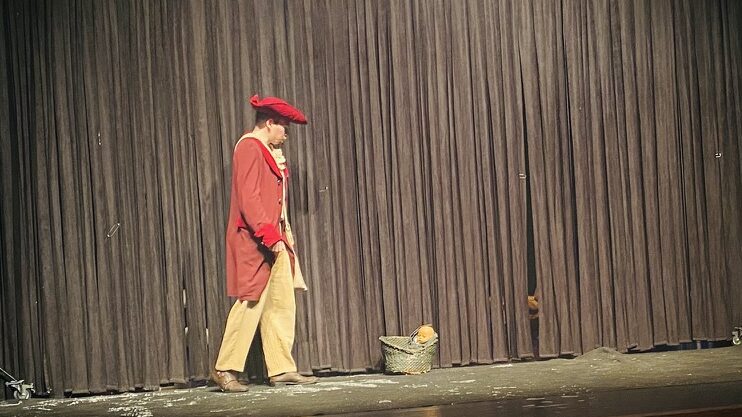
Theater appears to be an excellent option for providing our children with a valuable cultural experience and developing their self-confidence and creativity. I still remember the day when I first took my son to a children’s play when he was just four years old. The costumes on stage, the music, and the interactive presentation of the actors nourish the imagination of young audiences and ensure that parents also enjoy watching. Such experiences also increase family conversations; children begin to create their own stories inspired by the characters they watch. Plays like “Gulliver’s Travels” come into play at this point and invite both little ones and adults to different worlds.
“Gulliver’s Travels” is an extremely suitable and colorful work for children’s theater. In this play, it’s possible to find both funny and emotional scenes. Fairy tale elements, action, and entertainment come together under the same roof. Prepared for children aged 2-13, the content of the play includes many different elements that can attract them, such as dwarfs, giants, rabbits, and magic tricks. The fundamental message of the play is built on the idea that “it’s worth overcoming all obstacles for our loved ones.” This message helps develop children’s imagination while also reinforcing values of friendship, love, and cooperation.
In this article, I’ll summarize “Gulliver’s Travels” scene by scene and share what values each section brings to our children. I’ll try to guide parents by touching on both the educational and entertaining aspects of the play. By adding small notes from my own parenting experiences, I want to explain how colorful and instructive the path to theater can be. With the help of subheadings, we’ll examine what’s important in each scene, what values children can gain, and how this process contributes to family communication. In the final section, in light of all these experiences, I’ll make a conclusive evaluation and clearly summarize why children’s theater is so valuable.
BRIEF INFORMATION ABOUT THE PLAY
“Gulliver’s Travels” has a fantastical storyline in general. In this story, Gulliver is a young hero who is both a doctor and interested in magic. Sophia, the person he loves, contracts an unexpected illness, and Gulliver decides to travel to various countries to save her. Different adventures, such as bringing peace to the Land of Dwarfs and overcoming fears in the Land of Giants, make the play both funny and emotional in parts. Children can experience various emotions while watching these scenes: excitement, curiosity, and sometimes a little fear. However, the happiness and relief that comes at the end leaves a positive impact on young viewers.
The basic approach of the play is to convey the idea that love and perseverance can overcome every difficulty in a childlike language. The characters’ costumes, stage decorations, mise-en-scènes, and music are designed to attract children’s attention. At the same time, the text contains educational messages such as friendship, cooperation, empathy, and problem-solving. These can leave lasting impressions on the minds of children aged 2-13. Additionally, parents encounter a storyline they can enjoy watching, so they can laugh and think along with their children throughout the play without getting bored. Seeing the emotional bond my daughter formed with the characters when I took her to a similar play made me very happy. “Gulliver’s Travels” creates exactly these types of opportunities for connection.

THE CHARACTER OF GULLIVER AND BENEFITS TO CHILDREN
Gulliver is the central character of the play. Although he is a young doctor, he is also interested in magic shows. From a child’s perspective, a hero with two different professions and areas of interest can seem very intriguing. This situation conveys the message to young viewers that “We can be interested in as many different things as we want; we can always be open to learning and experiencing.” Additionally, Gulliver’s constant repetition of the word “adventure” and his tendency to see every difficulty as a game contributes to children’s flexibility and self-confidence. They can internalize the idea that “Even if I make a mistake, it’s in my hands to try again.”
Children aged 2-13 in particular have great interest in role models. Gulliver stands out as both an intelligent and loving character. His being a doctor and trying to heal people represents empathy and helpfulness. His magician side represents a personality aspect that enriches imagination and is open to surprises. Through Gulliver, children tend to adopt both the “I can solve difficulties” and “I can learn while having fun” mindsets. As a parent, seeing my child influenced by Gulliver’s curious attitudes and making small magic attempts at home after the play made me laugh quite a bit. Play characters can sometimes provide unexpected inspiration in real life.
SOPHIA AND EMOTIONAL DEVELOPMENT
Sophia is Gulliver’s greatest source of motivation in the play. Though Sophia’s contraction of a relentless illness adds a dramatic dimension to the story, it contains very important messages for children’s emotional development. Helping people we love, taking their health problems seriously, and striving to find a cure as soon as possible help nurture concepts like “responsibility” and “sensitivity” in children’s little hearts. Because Sophia’s illness isn’t taken lightly; everyone takes it seriously and tries to find a solution.
As Sophia’s condition becomes more serious in the later parts of the play, it’s possible to see Gulliver’s anxiety and loving effort. This effort shows children the importance of emotions like “commitment,” “loyalty,” and “resilience.” The character of Sophia is generally positioned in a loving, naive, and emotional role. This sets the stage for children to develop empathy on stage, thinking, “This person needs help, but she’s still waiting with hope.” While some parents might think these kinds of stories could frighten children, they often embrace the hopeful side of the story more strongly. Especially when parents discuss these scenes with their children after the play, they can strengthen family bonds by sharing emotions together.
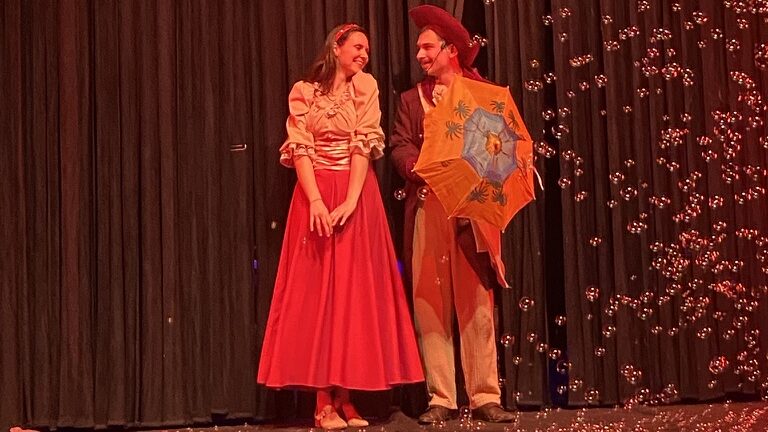
LAND OF DWARFS: PEACE AND AGREEMENT
The Land of Dwarfs, the first journey point of the play, is the scene of great disagreements among tiny rulers. When Gulliver arrives here, he learns that two dwarf kings are in a seemingly pointless war. They are having a major conflict over minor issues like differences in breakfast customs or how to crack an egg. This part tells children how issues that aren’t really important in our lives can be blown out of proportion. It also shows how being stubborn about small details without realizing it can lead to meaningless consequences.

The reconciliation of the dwarf kings happens thanks to Gulliver. He explains to them the importance of peace, particularly that cooperation would be a better approach in the face of bigger problems. In this scene, children see that problems can be solved not through violence or fighting, but by talking and finding middle ground. Even parents can sometimes relate this to small home quarrels and discuss it with their children in a fun way: “You argue with your sister at breakfast too, but look how they’ve made peace here, right?” My own son had surprised me by saying, “Mom, we sometimes get angry over small things too, but the solution turns out to be through talking.” That’s exactly the power of theater: creating awareness.
LAND OF GIANTS: FEAR AND COURAGE
The next stop, the Land of Giants, contains some of perhaps the most intriguing scenes in the play. With the change in decor, costumes, and sound effects, children witness enormous objects and huge giants. This situation, which initially creates fear, combines with a lesson showing that giants too can need help. Although giants have enormous bodies, one of them is struggling with a headache or another problem. Gulliver, with his doctoring skills, tries to alleviate the giant’s pain.
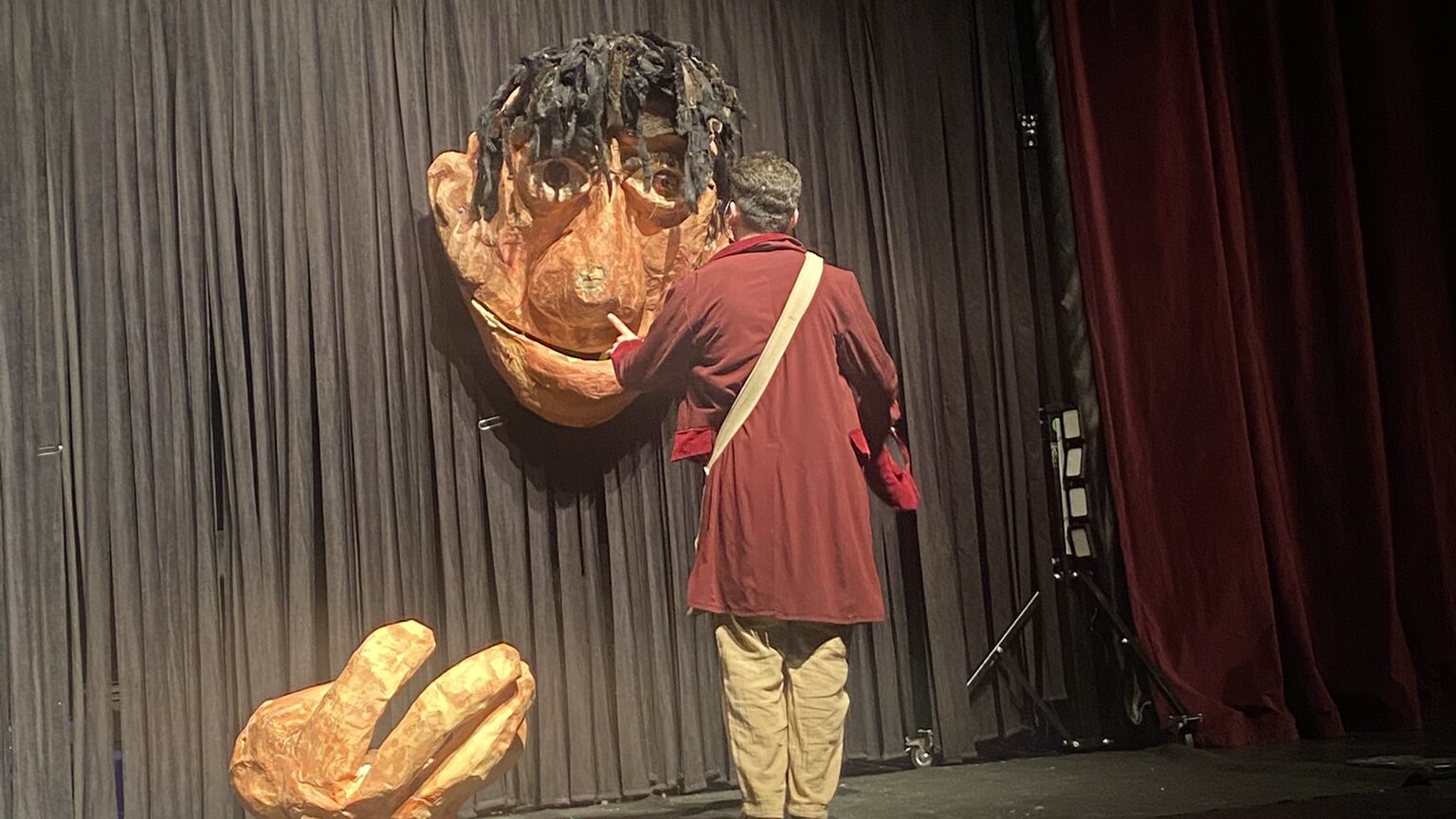
Here, children learn the truth that “Everyone who appears big or strong can have problems; they can become weak too.” This understanding expands the feeling of empathy and reinforces the idea that “We can communicate with things we fear or think are big.” My own daughter had held hands as if praying for the giant’s pain to pass in this scene. Compassion stood out more than fear. Her asking afterward, “Mom, everyone needs help even if they’re very big, right?” really pleased me. This picture beautifully demonstrates that children can choose the feeling of support over fear.
ENCOUNTER WITH THE RABBIT: EMPATHY AND COOPERATION
One of the funny and equally cute scenes of the play is where Gulliver meets the rabbits. Rabbits are known as “bad” because they gnaw on the dwarfs’ houses. But in reality, it’s understood that they exhibit such behavior because they have difficulty finding food. As Gulliver talks to the rabbits and tries to offer them solutions, children learn that “every story has two sides.” The idea that we need to listen first to understand why someone behaves “harmfully” or “strangely” is clearly emphasized here.
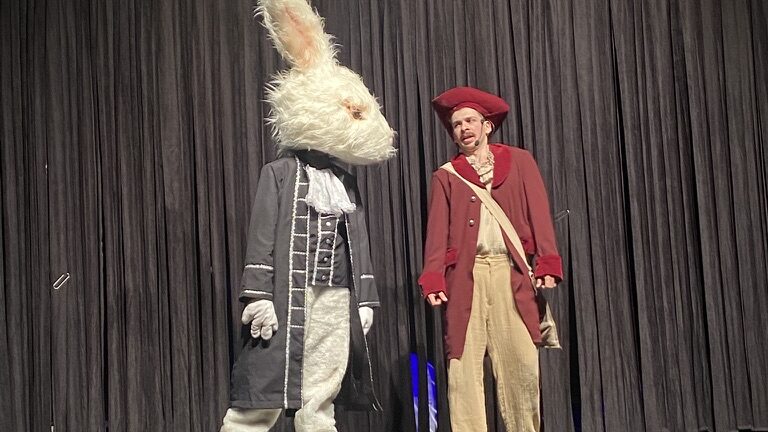
The cheerful and somewhat timid nature of the rabbits is a source of entertainment for young viewers. This scene has plenty of interaction and laughter. At the same time, it conveys the message of “how helping a creature that can’t find food can soften it.” Children realize that helping is not a one-sided sacrifice but actually an agreement where both sides win. After leaving the play, your child might come up with animal-loving suggestions like, “Mom, should we put a bowl of water in front of our door?” My son clearly expressed his feeling of empathy by saying, “The rabbits were hungry too, I wish we could give them carrots.” This is a beautiful example of how transformative children’s theater can be.
THE MOST IMPORTANT VALUES OF THE ADVENTURE: LOVE, SHARING, SOLIDARITY
There are some values that are felt throughout the play but become particularly clear towards the end: love, sharing, and solidarity. In his journey to save Sophia, Gulliver meets different cultures, falls into various problems, and tries to solve them all with love, communication, and a bit of humor. This journey shows that “coping with difficulties” is possible “not alone, but with the support of others.” Children receive the message that “Humans need each other” in every moment of friendship they see on stage.
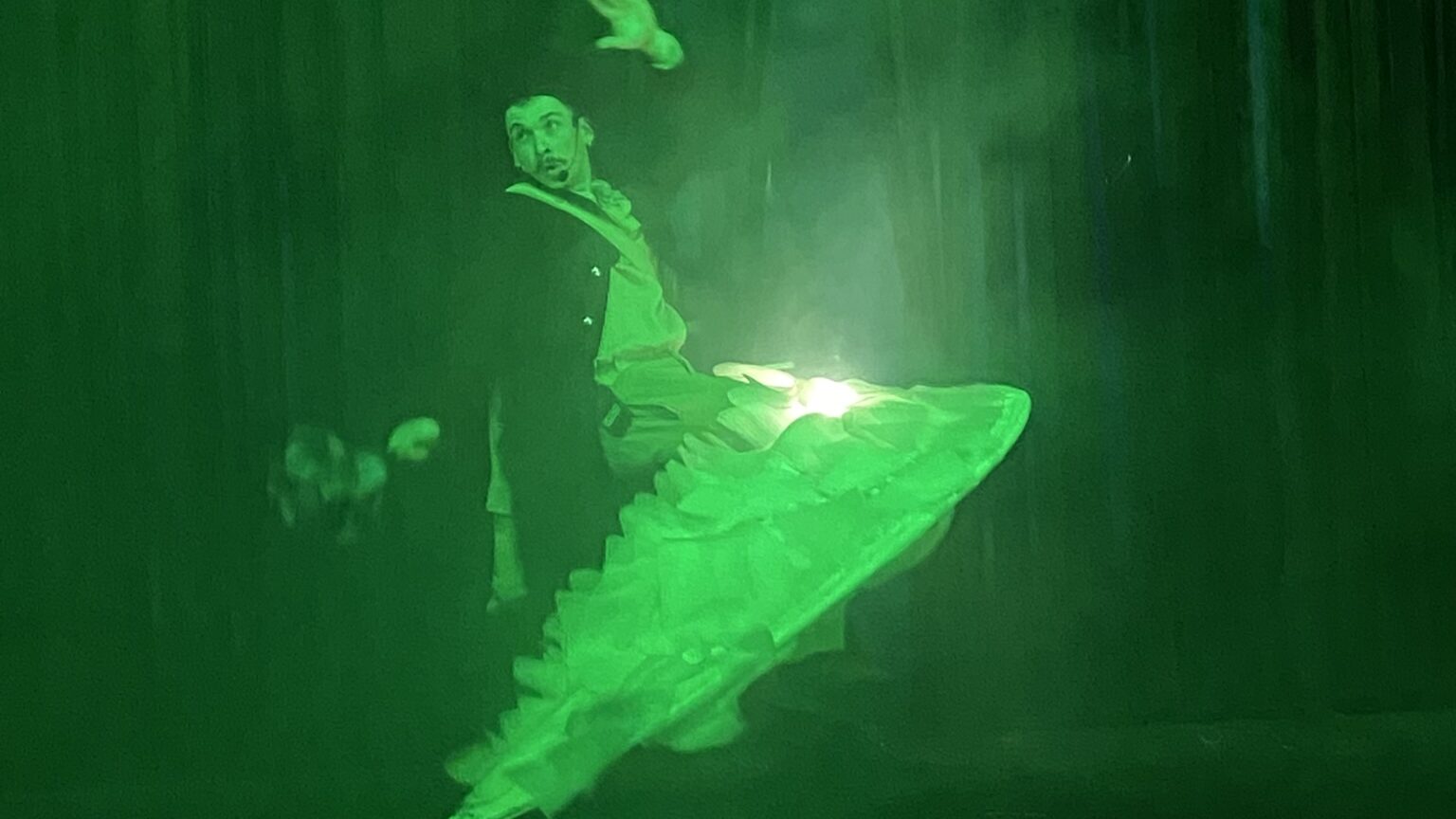
The abundant presence of humor in the play keeps children’s attention alive and allows them to internalize what they learn with pleasure. For example, Gulliver boosts morale for both himself and those around him with magic tricks. These scenes support the idea that “we can cultivate hope and joy even in difficult times.” Humor is an effective tool for translating more serious topics into a language children can understand. Thanks to this humorous approach, parents can have a “What did we learn, what did we feel in which scene?” conversation with their children in a much more natural atmosphere after the play. Because values learned with fun stay in children’s hearts longer.
THEATER EXPERIENCE: CHILDREN’S GAINS
We can’t enumerate all the opportunities that theater, especially children’s theater, offers. Productions like “Gulliver’s Travels” mean big gains for little viewers. First of all, seeing live performance on stage stimulates children’s imagination. For generations accustomed to watching animations, the combination of real actors with costumes, lights, and music creates a magical effect. By directly observing body language, facial expressions, and changes in tone of voice, they learn how emotions are expressed.
Another gain is the development of language and communication skills. Your child’s vocabulary expands, they hear different forms of speech, and learn to make connections between events. Theater encourages children to move from being viewers to active thinkers. Inner questions like “Is the character on stage right now right or wrong? How would I solve this problem?” arise. Also, social interaction strengthens as they watch in groups. Small discussions they have with friends or siblings after the play guide them towards critical thinking. When my own son asked, “Do you think the dwarf kings could have agreed from the beginning instead of being so stubborn?” I felt that the play was continuing to live in his mind.
PREPARATION AND RECOMMENDATIONS FOR PARENTS
As a parent, when you decide to take your child to the theater, you can make this experience more enjoyable by making small preparations. First, it will be helpful to briefly research the content of the play. In a play like “Gulliver’s Travels,” with many fantastic elements, some children may feel excited while others might be frightened. If your child has previously shown signs of fear or anxiety, you can give them an idea by showing them a brief summary of the play, or even a trailer if available. This way, your child can anticipate what they will encounter, and surprises that might spoil their enjoyment are minimized.
Another suggestion is to allocate time before and after the play. With a short chat before the play, you can raise their interest with questions like “We’re going to watch an adventure, who do you think might be in it?” Afterward, it’s possible to increase emotional sharing with questions like “Which scene did you like the most? Why?” If your child is young (between 2-5 years old), it’s important to learn the duration of the play and the break to make necessary preparations. For example, details like whether it will be a 1-hour play, if it has 2 acts, how long the break will be, help manage both your patience and your child’s. Also, bringing small snacks and water, especially in areas where the theater allows it, ensures children’s comfort. According to my experiences, if you don’t want to miss parts of the play due to unexpected hunger crises or bathroom needs, it’s beneficial not to neglect these preparations.
CONTRIBUTION OF WATCHING THEATER TO FAMILY COMMUNICATION
Theater is not just entertainment but also a bridge that strengthens family communication. After watching an adventure-filled play like “Gulliver’s Travels,” it becomes a shared experience for the family. Talking about characters and scenes both develops children’s language skills and sets the groundwork for parents to establish a deeper dialogue with them. Additionally, children assess their own emotions by asking questions like, “Mom, was the dwarf king really funny, or was he bad?” In this way, the foundations of critical thinking are laid, and the process of understanding each other within the family accelerates.
Imagine the play continuing at home: Children imitate characters, sometimes arranging small “acting” games. Parents can strengthen family bonds by participating in these imitations. This situation is perhaps one of the most fun ways to spend quality time together. When I play small scenes with my own son at home, like “Now you be the dwarf king, and I’ll be the giant,” I feel like I’m rediscovering the child within me. Looking at the same world as our children and taking them seriously increases their self-confidence while adding unforgettable memories to the family.
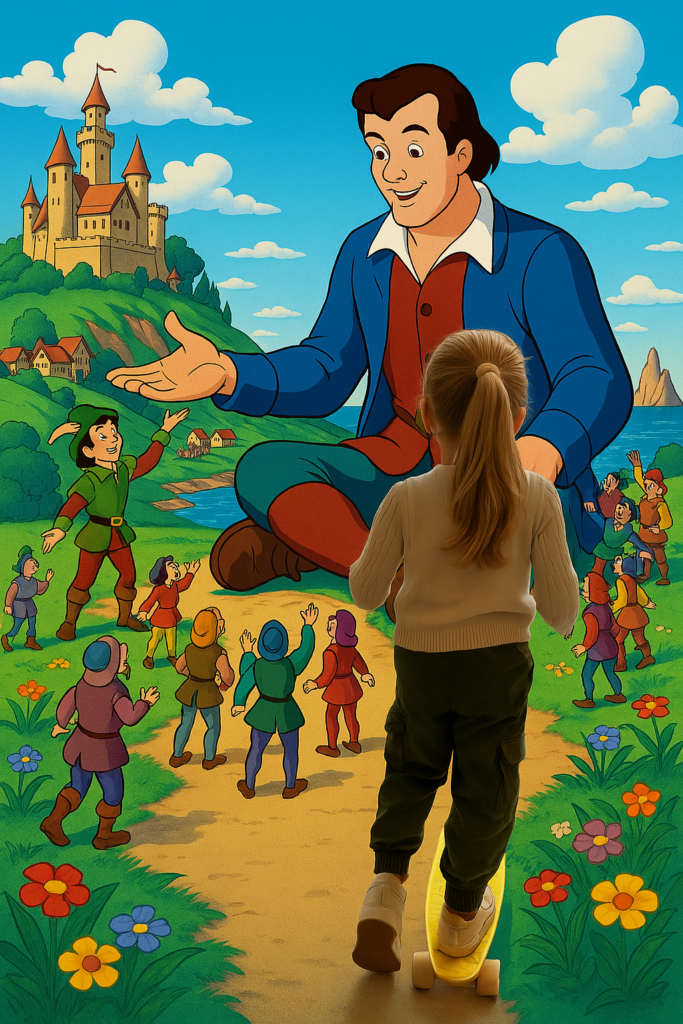
CONTRIBUTIONS OF THEATER PLAYS TO CHILDREN
Below, you can see a small summary of what “Gulliver’s Travels” or similar children’s theater can generally provide:
- Empathy Development: Opportunity to recognize different emotions of different characters.
- Emotional Intelligence: Healthy expression of feelings like sadness, fear, joy.
- Language Skills: New words, different speech patterns, storytelling ability.


